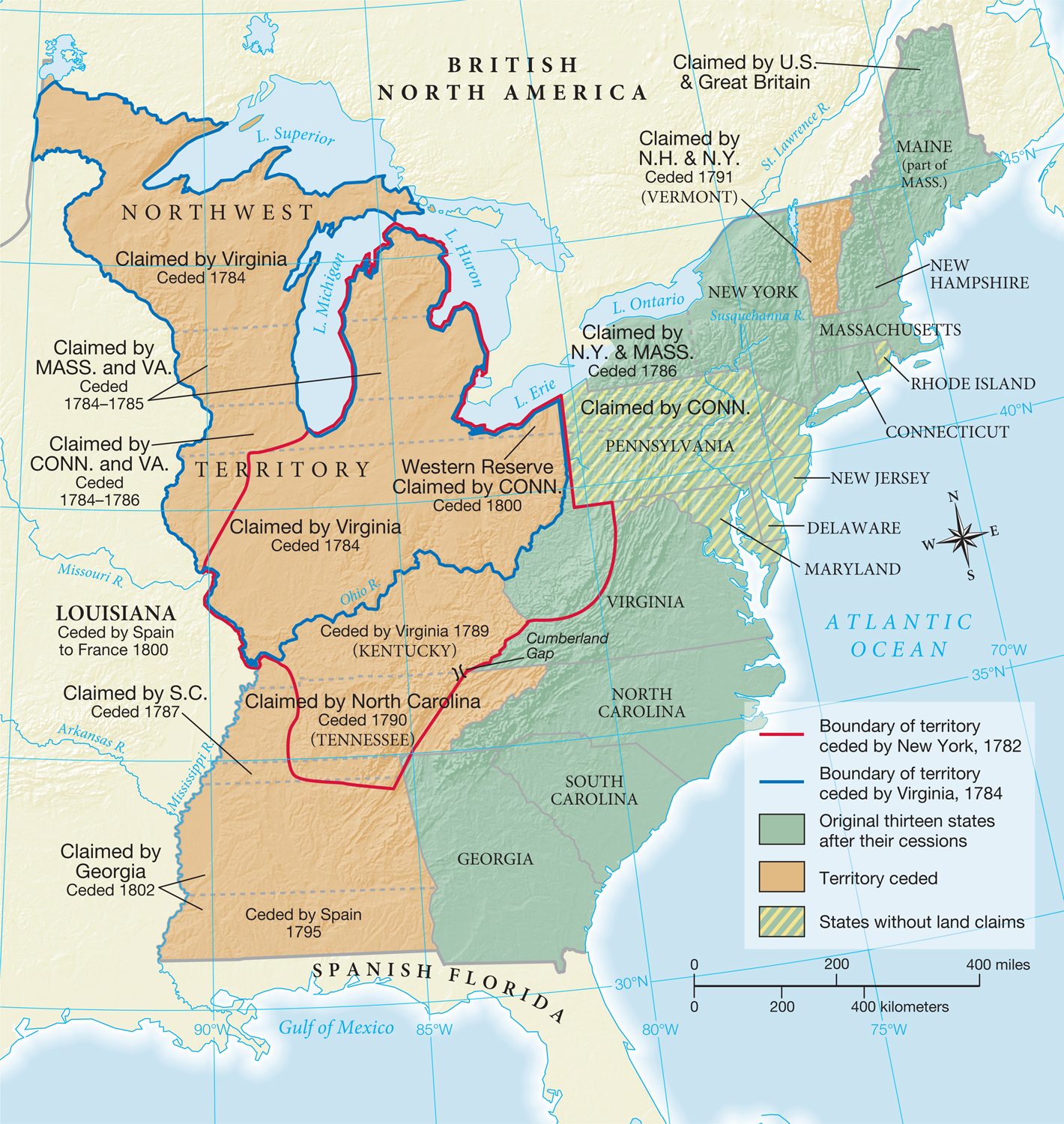The American Promise:
Printed Page 198
The American Promise Value
Edition: Printed Page 190
Chapter Chronology
The most serious disagreement delaying ratification of the Articles concerned the absence of any plan for the lands to the west of the thirteen original states. This absence was deliberate: Virginia and Connecticut had old colonial charters that located their western boundaries at the Mississippi River, and six other states also claimed parts of that land. But five states without extensive land claims insisted on redrawing those colonial boundaries to create a national domain to be sold to settlers (Map 8.1). As one Rhode Island delegate put it, “the western world opens an amazing prospect as a national fund; it is equal to our debt.”

MAP ACTIVITY Map 8.1 Cession of Western Lands, 1782–1802 The thirteen new states found it hard to ratify the Articles of Confederation without settling their conflicting land claims in the West, a vast area occupied by Indian tribes. The five states objecting to the Articles’ silence over western lands policy were Maryland, Delaware, New Jersey, Rhode Island, and Pennsylvania. READING THE MAP: Which state had the largest claims on western territory? CONNECTIONS: In what context did the first dispute regarding western lands arise? How was it resolved? Does the map suggest a reason why Pennsylvania, a large state, joined the four much smaller states on this issue?
The eight land-claiming states were ready to sign the Articles of Confederation in 1777 since it protected their interests. Three states without claims—Rhode Island, Pennsylvania, and New Jersey—eventually capitulated and signed, “not from a Conviction of the Equality and Justness of it,” said a New Jersey delegate, “but merely from an absolute Necessity there was of complying to save the Continent.” But Delaware and Maryland continued to hold out, insisting on a national domain policy. In 1779, the disputants finally compromised: Any land a state volunteered to relinquish would become the national domain. When James Madison and Thomas Jefferson ceded Virginia’s huge land claim in 1781, the Articles of Confederation were at last unanimously approved.
